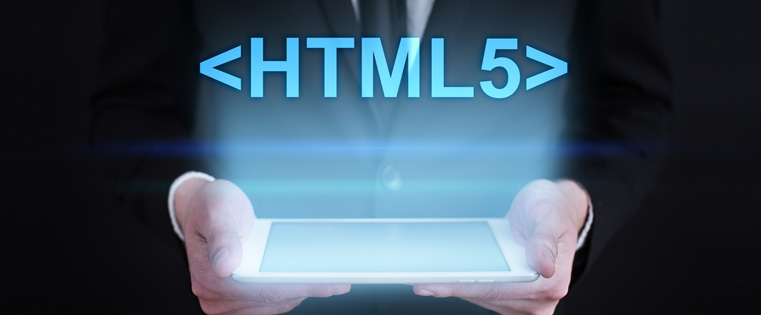What is HTML5 and How Is It Related to Online Learning?

HTML5 has been a buzzword in the eLearning industry for a long time now. Many know that courses published to HTML5 output work on multiple devices, but very few people know what it actually means and how it’s really connected to eLearning. That’s why, I am gonna tell you the importance of HTML5 and how it’s related to eLearning in this blog.
What is HTML & HTML5?
Let’s start from the very basics! HTML (Hyper Text Markup Language) is a markup language used to create web pages. HTML has been there since the 90s, and it’s consistently evolving to meet the needs of the online generation. The World Wide Web Consortium (W3C) maintains the standards of HTML.
The web pages you view through various browsers are presented using HTML coding. HTML5 is the latest version of the HTML. Each updated version has brought new capabilities, such as embedding multimedia elements (like audio and video) directly in the HTML code. Prior to HTML, there was a need for third party applications to view animations or Flash-based videos within browsers.
This facility of HTML5 has made it possible to run course content including audio and videos on mobile devices such as smartphones, tablets, iPhones and iPads. Soon, it became a hot favorite with Gen Z, as many of them can access eLearning on mobile devices.
Role of HTML5 in Web Browsers
Most common web browsers such as Internet Explorer, Safari, Firefox, Chrome, and Opera read and convert HTML code into web pages. Various web browsers implement the HTML standards at different rates. However, all major web browsers are committed to improving their support for HTML5.
HTML5 and Mobile Devices
Now, apart from different browsers, learners are accessing content through multiple devices from desktops, laptops, Macs, and tablets to smartphones, iPads, and iPhones. All these devices have different operating systems, varied technical specifications, screen sizes, and more. They render HTML5 output differently. We have to acknowledge that digital devices and browsers will impact the display and the visual appeal of your eLearning courses.
Use of HTML5 for E-Learning
Prior to HTML, most eLearning was published to Flash. This process was pretty simple as learners had to install the latest version of the Flash player to access online courses. There were just a few web browsers two decades ago and Flash updated versions frequently. But as the years went by, technological changes pushed us quickly to embrace new developments. Several web browsers came in, the mobile phone era started, and smartphones and tablets of various screen sizes came into picture. Flash was the universal standard in the pre-mobile era, but few mobile devices support it. Third party extensions, plug-ins, and add-ons were required to run Flash on various web browsers.
HTML came to deal with the headaches of Flash’s incompatibility with mobile devices and browsers. E-learning companies and organizations desire to extend online training via mobile devices and is the stepping stone of success for HTML5. Its compatibility with various Learning Management Systems (LMS) standards such as AICC, SCORM, TinCan/Experience API has made it the potential alternative to Flash.
HTML5 and Authoring Tools
Most modern e-learning authoring tools provide HTML5 output. HTML5 publishing option is available for the convenience of courseware developers. You can import your legacy courses into the selected authoring tool and retain animations without additional plug-ins while publishing them directly to HTML5 because of the native support they offer. They also create effective mobile presentations that can be published to the HTML5 format.
As you using HTML5 in eLearning? You have to remember that web browsers, mobile devices and even HTML is evolving constantly. Ensure your online learning is published to HTML5 and make it mobile-friendly.





